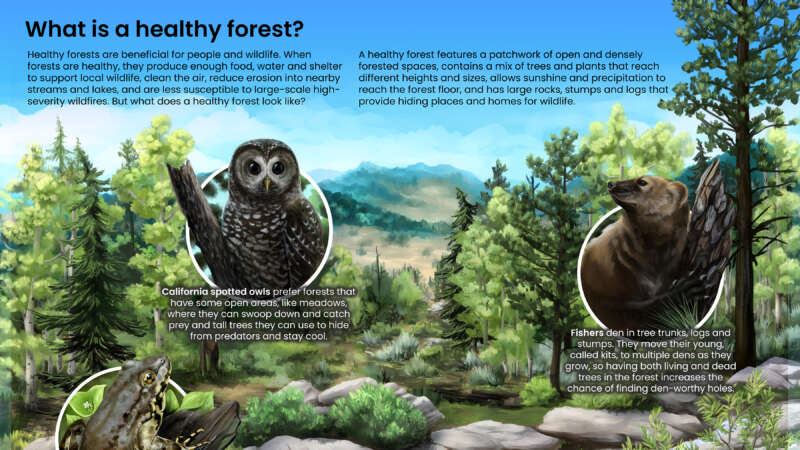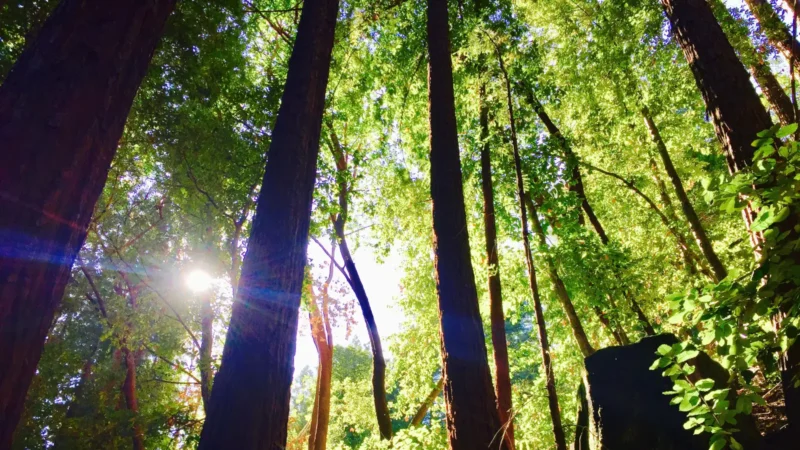Environment
What is a Healthy Forest?
Healthy forests are beneficial for people and wildlife.
When forests are healthy, they produce enough food, water and shelter to support local wildlife, clean the air, reduce erosion into nearby streams and lakes, and are less susceptible to large-scale high-severity wildfires.
But what does a healthy forest look like?
Rogan Brown: The Science of Paper
Rogan Brown is an Anglo-Irish artist notable for his intricate paper sculptures that beautifully intertwine art and science. Drawing inspiration from the microscopic to the monumental—microbiology, botanical forms, geological structures, and marine ecosystems—Brown meticulously handcrafts and laser-cuts complex three-dimensional artworks. His pieces surpass mere representation, merging scientific accuracy with surreal artistic flair.
Shiuly Khatun: Dengue Warrior
Shiuly Khatun is a Field Supervisor at the Dhalpur Aalo Clinic in Dhaka, Bangladesh, where she manages and coordinates the clinic’s operations. Her daily responsibilities are vast and critical, ranging from mapping areas and dividing work for community volunteers to conducting health sessions and overseeing satellite clinic activities.
Dengue fever, once confined to the tropics, now threatens the U.S.
Climate change is expanding the habitat of the mosquitoes that carry the disease, allowing them to spread further north.
Meg Norris was traveling in Argentina in April when the first signs of dengue fever hit her. The weather in Salta, just south of the Bolivian border, was warm, but Norris, a 33-year-old from Boulder, Colorado, zipped a fleece sweatshirt around her body to stop herself from shivering.
“I thought it was sun poisoning,” she said.
Dengue Explained in Five Minutes
Check out this video by Free Med Education to learn about dengue fever, its cause, and its symptoms.
The Rise of Dengue: A Global Perspective
Around the world, dengue is considered the most common viral disease transmitted by mosquitoes that affects people. According to the World Health Organization (WHO), the disease is now endemic in more than 100 countries. In the first three months of 2024, over five million dengue cases and over 2000 dengue-related deaths were reported globally. The figures so far project that 2024 could be even worse than 2023, with the regions most seriously affected being the Americas, South-East Asia, and Western Pacific.
In the Americas, there were 6,186,805 suspected cases of dengue reported in the first 15 weeks of 2024. To put this into perspective, according to the Pan American Health Organization (PAHO), this figure represents an increase of 254% compared to the same period in 2023. Of these cases 5,928 were confirmed and classified as severe dengue.
Summer Lajoie: The Simplicity of Creation
Summer Lajoie merges artistry with nature, creating ephemeral art that captures the fleeting beauty of the natural world. Each creation reflects a moment of profound connection and presence.
For Summer, art is more than just a form of expression; it’s a vital ritual. Inspired by the transient works of Andy Goldsworthy, she engages with the environment, crafting art from the elements she encounters. This process focuses less on the final product and more on the act of creation itself.
Dr. Tamberly Conway: Nurturing Forests & Human Health
Dr. Tamberly Conway, Founder and CEO of Conservation Conexions, is not just a conservationist for our forests but also a leader in the realm of forest therapy.
During her career, Tamberly has worn many hats. From a dedicated Forest Service employee to an Association of Nature and Forest Therapy Certified Guide, entwining her passion for the natural world within each role she has taken on.
She spent her time with the U.S. Forest Service Conservation Education Program advocating for forest health and human wellbeing, primarily for and within diverse communities. In December of 2019, Tamberly left the USFS to fully dedicate herself to Forest Therapy and its ability to connect and nurture both land and human health.
Japanese “Forest Medicine” – Using Nature to Heal Yourself
The fountain of youth is a forest. Trees cast off years and grant health and cheer, or so transcendentalist Ralph Waldo Emerson claimed in his 1836 essay “Nature.” ”In the woods,” he wrote, “I feel that nothing can befall me [. . .] which nature cannot repair.”
Indeed, research shows that trees really do have healing powers. For one thing, they release antimicrobial essential oils, called phytoncides, that protect trees from germs and have a host of health benefits for people.
Untold Secrets of Healing Forests
Tens of thousands of unexplored forest plants may hold the key to new therapeutic drugs for curing a planet rocked by pandemics and new diseases.
They called it Project 523 after its start date, 23 May, 1967. Back then, it was classified as a top-secret state mission, blessed by Mao Zedong, Chairman of the Chinese Communist Party. The Vietnam War was in full swing, and China’s ally Ho Chi Minh, the Prime Minister of North Vietnam, was losing large numbers of soldiers to malaria. He petitioned China to help find a cure for it.
About 600 scientists, including military personnel, scientists and practitioners of Western and traditional Chinese medicine, were convened and divided into three teams: one for conducting clinical studies, one for looking into traditional Chinese medicine and the third for developing synthetic compounds. Among their goals was a cure for chloroquine-resistant malaria.









